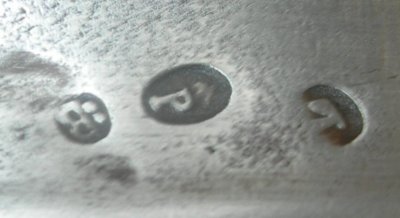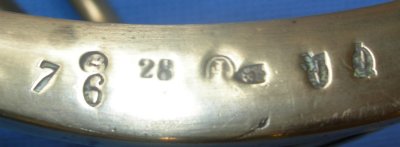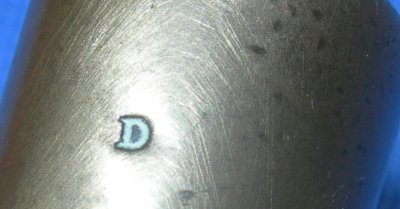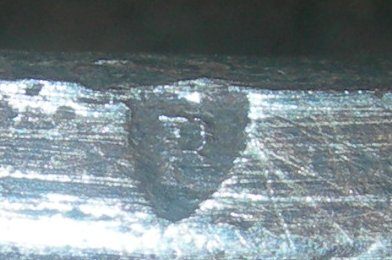
|
A very early (June 1811) French AN XIII heavy cavalry trooper's sabre for sale; 100% authentic.
One of the first AN XIII's ever made, almost certain to have seen action against the British, Spanish, Portuguese, Prussians and / or Russians; 100% authentic, guaranteed. The French call these AN XI's, the British call them AN XIII's; the difference being the French classify them according to the year they first entered service, the British when the pattern / model was approved. AN XI = 1811, AN XIII = 1813. Purists say the AN XIII has to have a lower grip ferule and a full (not partial) 3 bar guard union into the pommel; as this has both, I will describe it as an AN XIII. Officianados of the AN XIII please note; yes, I know the grip has more ring turns than later manufactured swords; this is part of the beauty of this sabre as it shows some of the development of the model. This AN XIII was made in June 1811 at Klingenthal; this is engraved to the blade's spine (image at bottom of page). The date corresponding exactly with the inspector "poinçons" (inspection marks) of Jean Pache, Jean-Georges Bick (pre-1812 version) and François Louis Lobstein (see: Klingenthal Date Markings and Inspector Markings).
The Klingenthal origins and one of the earliest AN XIII's ever made is confirmed on the hilt, along with another episode of the sabre's history; its conversion to spear point and being issued with the new steel scabbard by the commercial division of Klingenthal, Coulaux. Normally Coulaux (private purchase) inspection marks would not appear on a government sword and I can only presume this happened out of a need to produce / re-issue as many swords as possible, which again I believe indicates a pre-Waterloo occurance. The original smaller Klingenthal stamp of Lobstein and issue number 28 (likely meaning this was the 28th AN XIII ever made) can be seen with the later B with a star in a shield stamp of Coulaux; the same stamp is on the throat of the scabbard, basically showing the sword was reissued at the same time as the new scabbard. There is also the corresponding Coulaux "D" stamp on the pommel (see end of page).
The Coulaux inspection stamps on this sabre again causes me to believe the modifications to spear point and the new style scabbard happened just before Waterloo; most pundits claim this occured after Waterloo and refer to the scabbard as the 1816 variant. However, as I outlined earlier regarding AN XIII = 1813 but this one was made in 1811, I believe the same is true of the model 1816 scabbard; that is when it became official, not when it first went into production. It should be noted, the possible date range of the Coulaux stamps is from around 1813 to around 1820. However, no-one seems to be able to adequately explain how comparitive large numbers of modified (spear) point AN XIII's with so called 1816 Model scabbards can be found at auction in the UK. Nor can anyone explain why private Coulaux inspector would reissue a state Klingenthal made sword after Waterloo; before Waterloo when there was an urgent production order made, yes. It is therefore less likely these swords were acquired from the French 1816 onwards and more likely they were war trophies from Waterloo (June 1815) and shortly after. Noted French expert and author Michel Petard told me that spear point production of these sabres happened during the height of demand for their manufacture; height of demand was before Waterloo. This sabre was not made with a spear point, it was modified to have a spear point, but the timing is likely to be the same for obvious reasons. I really believe this sabre most likely was a war trophy brought home to Great Britain by a British soldier; in 1815 the spoils of war (trophies, rape, ransacking) were still very much in "vogue". In any event, the fact this is one of the first AN XIII's ever made and has not been rehilted as so many were, makes it likely it saw very active service and very special. The scabbard has an "acier bruni" (browned) finish; it is not rust! The blade is in exceptionally good condition and is firm in the hilt. The brass hilt has some minor nicks but nothing serious. The leather grip is original but most of the twisted wire bindings are gone. The ring bindings could be replaced but as this early version of the AN XIII has more ring turns which go further up the grip then most, this should be done with care. Further pictures available upon request.
|
| Copyright © Antique Swords .Com (formerly SwordSales EU / Antique-Swords EU) - All rights reserved |







